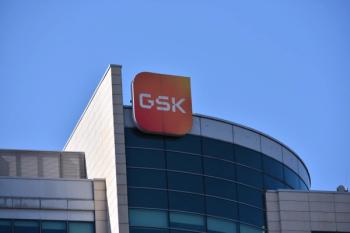
- BioPharm International-08-01-2010
- Volume 23
- Issue 8
Spanning the Globe
This month, we catch up on major developments around the world and their implications for the contract services industry.
The European Union (EU) debt crisis may have started in Greece, but it has spread throughout Europe. The immediate nature of the crisis was monetary, but the underlying cause of the problem is excessive government spending on social programs financed by uncontrolled government borrowing. Now, nearly all European governments are focused on reining in their budgets.
Jim Miller
As European governments begin to focus on their fiscal profligacy, spending on healthcare and bio/pharmaceuticals will get close attention. Healthcare accounts for 15% of public spending in most European countries and has been growing faster than most budget items. Government-run programs account for 75% of all healthcare expenditures in Europe and at least 70% of pharmaceuticals purchased there, according to data from the Organization for Economic Co-operation and Development and Bloomberg News. As European governments make drastic cuts in public expenditures to lower deficits and reduce sovereign debt, spending on healthcare and bio/pharmaceuticals will likely be a major target.
One key way European governments will cut spending is through their control of prices. Government agencies set prices for bio/pharmaceuticals in most European countries, and they are aggressively cutting prices. Spain and Greece already have announced plans to reduce prices for generic drugs by 25%, and Germany has announced 10% cuts.
Another government tool will be driving more use of generics. The countries with some of the biggest problems, e.g., Spain and Italy, also have some of the lowest generic-drug penetration. IMS Health estimates that increased use of generic drugs by the 27 EU member states could generate €30 billion ($38 billion) in savings annually. Government agencies also could make it more difficult for new drugs to get coverage eligibility, especially expensive new biopharmaceuticals.
Contract manufacturing organizations (CMOs) will feel the effects of reduced healthcare expenditures in the form of fewer or smaller batches, and pressure from clients to reduce prices. This situation will be especially difficult for European CMOs, which already must compete in a market with far too much capacity and widespread price-cutting.
RISING COSTS IN CHINA
CMOs and CROs in China usually have been thought of as having labor cost advantages relative to US and European providers. However, a variety of factors appear to be pushing labor costs up in China, including industrial actions by Chinese workers; moves to increase the minimum wage and enforce tougher labor, worker safety, and environmental laws; the high cost of living in major cities like Beijing and Shanghai; and labor shortages across the country.
The rising wages are being accompanied by an appreciation of China's currency, the renminbi, as the Chinese government looks to drive production growth for domestic consumption and control inflation.
European and North American service and materials providers will be inclined to welcome the rising costs in China, because it will improve their cost position relative to their competitors in China. A 25% increase in labor costs, combined with a 10% appreciation in the renminbi, would raise the cost of sourcing in China by 25–35%. European providers may get an even bigger gain in competitiveness in light of the rapid devaluation of the Euro and British Pound. After adding in the additional costs of managing long-distance sourcing relationships, bio/pharmaceutical companies will see the cost advantages of sourcing from China narrow and may stick with more local providers.
The second order effects of the rising wage costs, however, may cause service providers in mature markets even more pain than they are facing today. That's because Chinese service providers and manufacturers will respond to their eroding competitive cost position in starting materials and simple chemistry by moving to higher value-added products and services such as formulation, advanced chemical intermediates, and biologics. This move to higher value-added services is exactly the strategy that North American and European companies have used to stay in business in the face of low-cost competition from the BRIC countries (Brazil, Russia, India and China). They will now be looking at lower-price competition in more sophisticated services and technologies that have been their refuge in recent years.
The rising costs aren't likely to diminish global bio/pharmaceutical companies' interest in China either. China remains the world's fastest growing major economy, and rising living standards are expected to increase demand for high-value pharmaceuticals. IMSHealth has projected that spending on drugs in China will grow 20% annually over the next five years. Bio/pharmaceutical companies will continue to be drawn to the opportunities of that rapidly-growing market.
INDUSTRY FRAGMENTATION
From a business perspective, one of the defining characteristics of the contract manufacturing industry is how fragmented it is. When an industry is fragmented, it means that there are many companies competing in the industry, and each has a relatively small market share. Fragmentation often is an indication of industry immaturity, i.e., the industry is relatively young and the sources of long-term competitive advantage have not yet been established. Fragmentation also suggests that barriers to entry for new competitors are low, and that there can be a lot of instability as companies fight for enough business to stay afloat.
That degree of fragmentation in the dose contract manufacturing industry was recently documented in an analysis of FDA approvals by PharmSource. In our analysis, we found that 200 of the 487 products receiving FDA approval (NDA and BLA) during the period 2005–2010 involved a contract dose manufacturer. Of those 200, we were able to successfully identify the CMO for 185 (92%) of them.
In total, 72 different CMOs had at least one of the 200 outsourced FDA approvals granted during the 2005–2010 period. Of those 72 CMOs, 44 (60%) received only one FDA approval over the five years covered by this analysis. Nearly half of the CMOs getting approvals (34 of the 72) are selling excess capacity and are not dedicated to the CMO business.
There does seem to be market leadership emerging in the CMO industry. The 12 companies receiving the most approvals accounted for 105 (52%) of all approvals involving a dose CMO.
The analysis suggests that we should see more industry consolidation in the coming years. Consider that over 60% of CMOs listed in the PharmSource ADVANTAGE database that claim FDA compliance received no new FDA approvals in the period, while most CMOs that did receive an approval, received only one.
It's hard to see how a dedicated CMO can survive long-term on one approval every five years, let alone none. Legacy products and technology transfer products (previously approved transferred from another manufacturing site to a CMO) may cover costs for a significant period, but new products are needed to replace the older products and drive the growth necessary to attract further investment.
Jim Miller is president of PharmSource Information Services, Inc. , Springfield, VA, 703.383.4903,
Articles in this issue
over 15 years ago
BioPharm International, August 2010 Issue (PDF)over 15 years ago
Downstream Disposables: The Missing Link in the Disposables Chainover 15 years ago
Tug of Warover 15 years ago
Myriad Decision Places Biotech at a Crossroadsover 15 years ago
Manufacturing Compliance in the Spotlightover 15 years ago
USP <63> Mycoplasma Tests: A New Regulation for Mycoplasma TestingNewsletter
Stay at the forefront of biopharmaceutical innovation—subscribe to BioPharm International for expert insights on drug development, manufacturing, compliance, and more.




